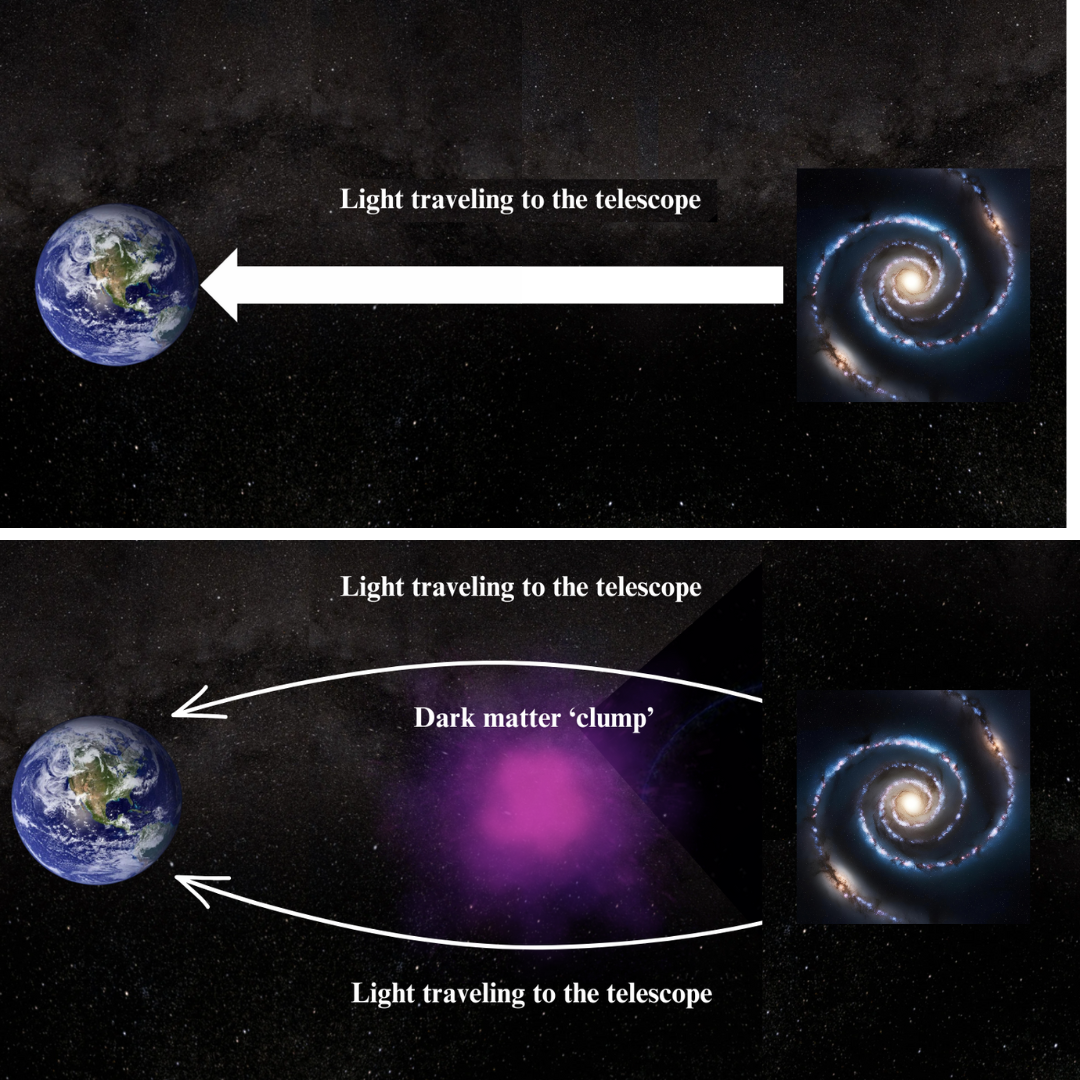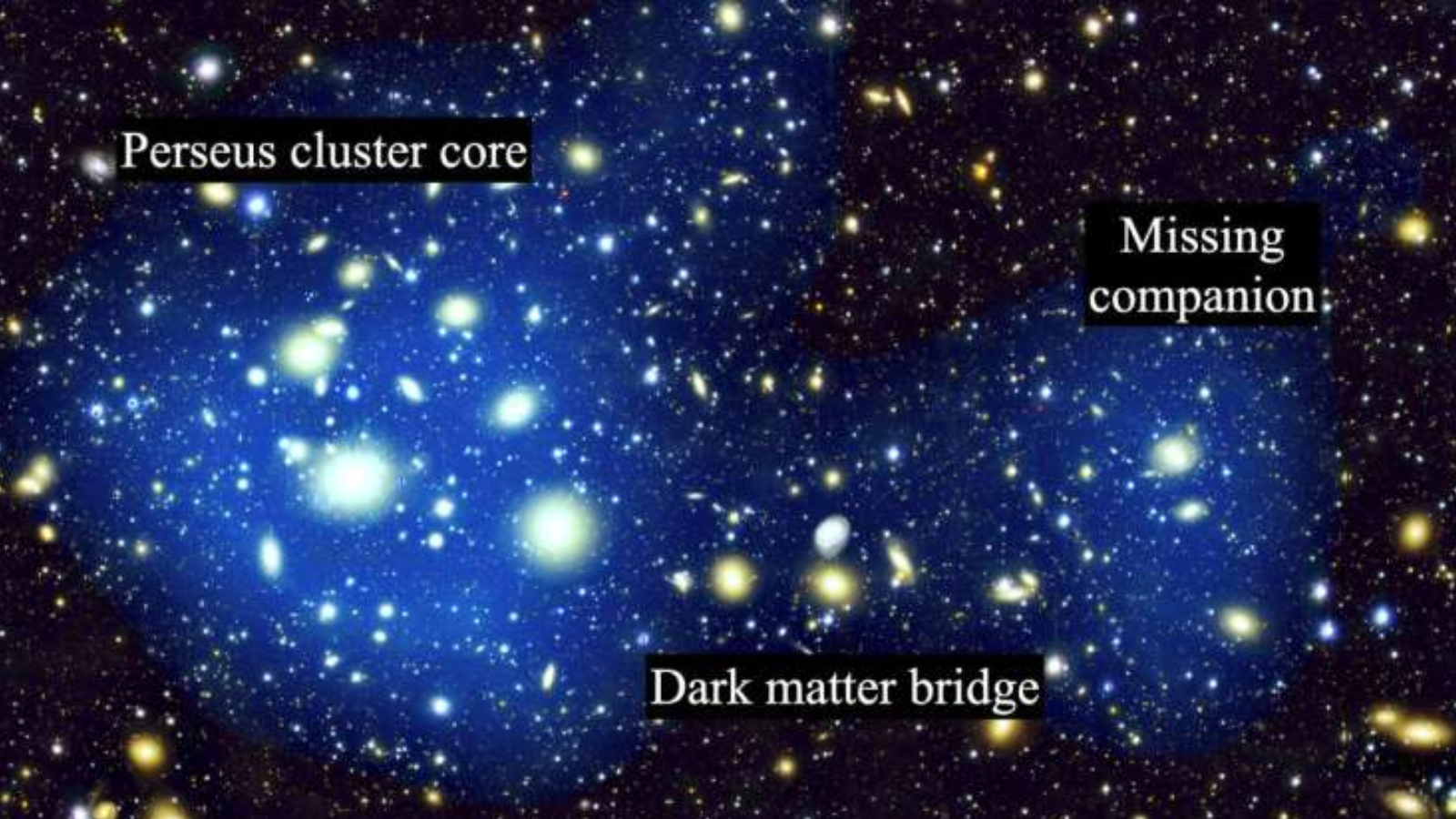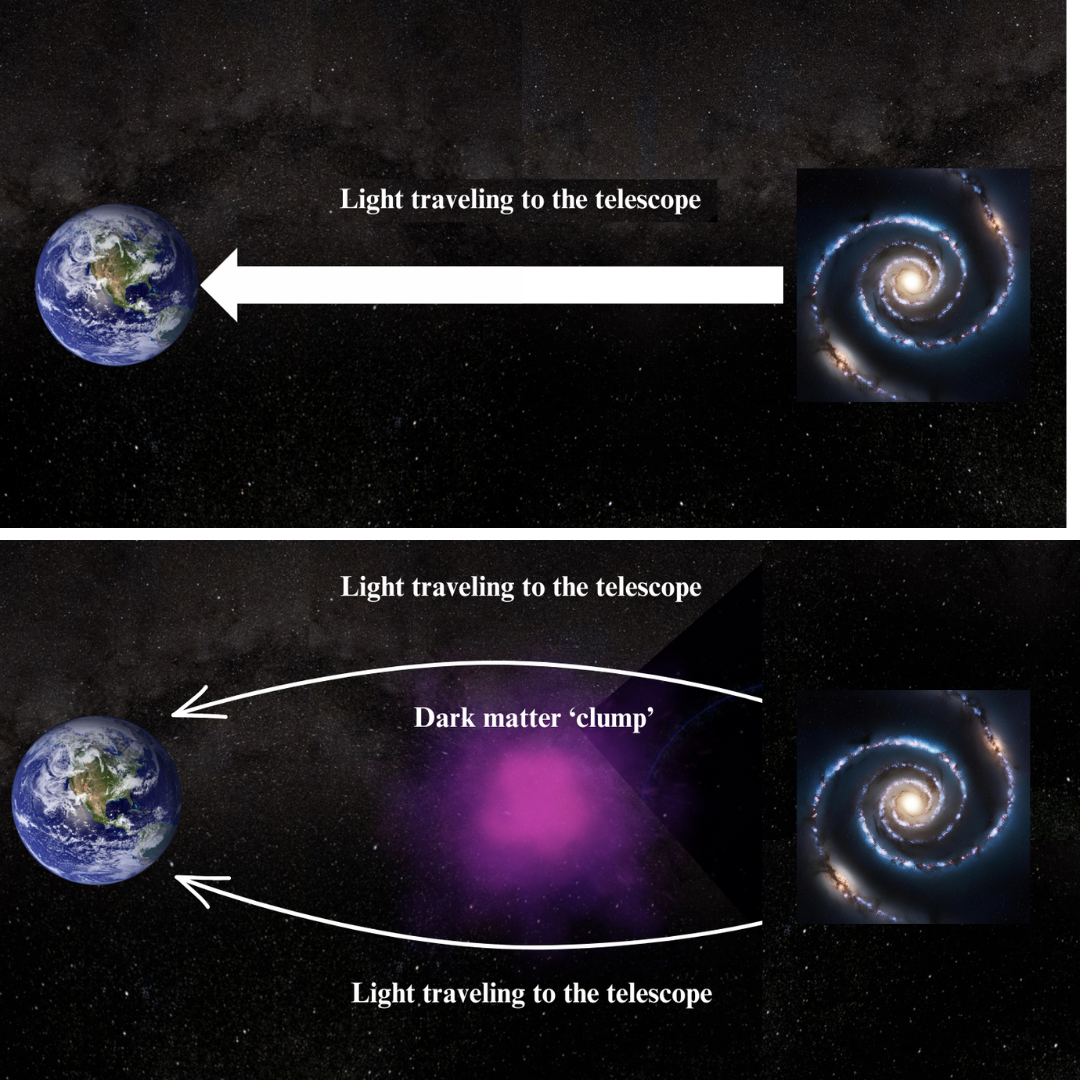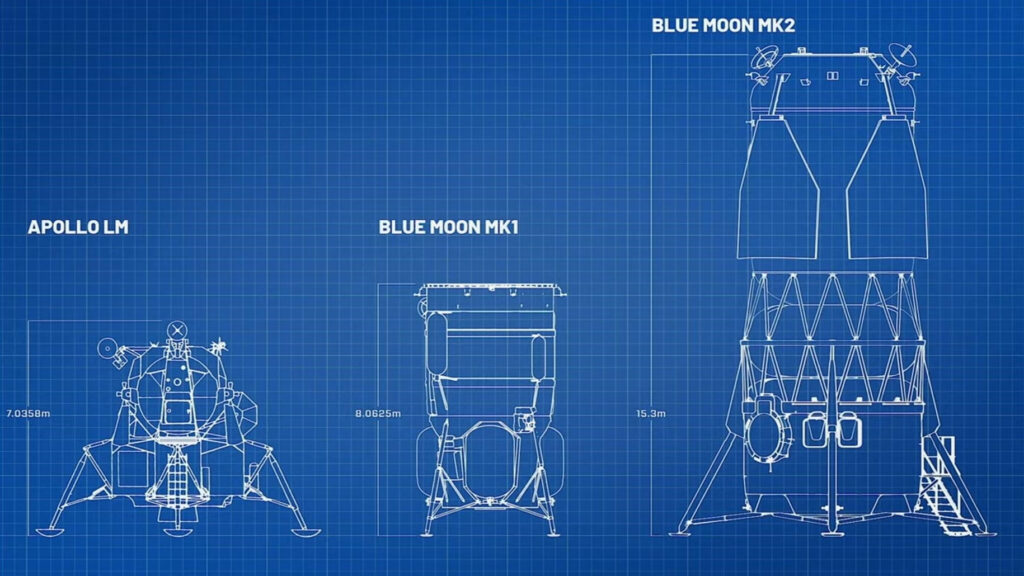Astronomers have discovered a long-missing element of a galactic collision involving the Perseus galaxy cluster, located 240 million light-years from Earth.
This element, a newly detected “subcluster,” is 1.4 million light-years to the west of NGC 1275, the central galaxy of the Perseus cluster. These two elements seem to be connected by a faint “bridge” of material.
The structural backbone of this bridge is dark matter, the universe’s most mysterious “stuff.” Dark matter remains effectively invisible by not interacting with light, but its interaction with gravity has helped to shape galactic structures.
“This is the missing piece we’ve been looking for,” team member James Jee said in a statement. “All the odd shapes and swirling gas observed in the Perseus cluster now make sense within the context of a major merger.”
Galaxy clusters are some of the largest structures in the known universe, consisting of thousands of galaxies bound together by gravity.
Scientists have long believed that these clusters grow through high-energy mergers that may well be some of the most powerful events in the cosmos since the Big Bang.
With a mass equal to around 600 trillion suns the Perseus cluster has long been considered to be the “poster child” for galaxy clusters. However, this model galaxy cluster has been lacking is the telltale signatures that point toward its growth via merger.
That was, until now.
The poster-child for galaxy clusters has a violent history
To tackle this mystery, Jee and colleagues used the Subaru Telescope and its Hyper Suprime-Cam to probe deeper into the Perseus than ever before.
This investigation hinged on a phenomenon called “gravitational lensing,” first predicted by Albert Einstein in his 1915 magnum opus theory of gravity known as “general relativity.“
General relativity states that objects with mass cause the very fabric of spacetime (the 4D unification of space and time) to warp, with gravity arising from this curvature.

When light from a background object passes through spacetime warped by a massive body, like a cluster of galaxies, its path is curved. This can cause the light to be amplified, thus magnifying that background body, hence the term “lensing.”
This effect can also reveal things about the lensing body, including its structure. And because dark matter has mass and therefore warps space and diverts light through its gravitational influence, lensing can also reveal the distribution of a gravitational lens’ dark matter content.

In this case, that process revealed the presence of a massive “clump” of dark matter in the Perseus cluster weighing in at 200 trillion solar masses. This clump is linked to the core of the Perseus cluster by a much lighter but significant dark matter bridge.
The team performed simulations of the Perseus cluster, which revealed that this clump collided with the cluster around 5 billion years ago. What remains of this cluster is still sculpting the Perseus cluster today.
Related Stories:
“This breakthrough was made possible by combining deep imaging data from the Subaru Telescope with advanced gravitational lensing techniques we developed — demonstrating the power of lensing to unveil the hidden dynamics of the universe’s most massive structures,” Jee concluded.
The team’s research was published on Wednesday (April 16) in the journal Nature Astronomy.



